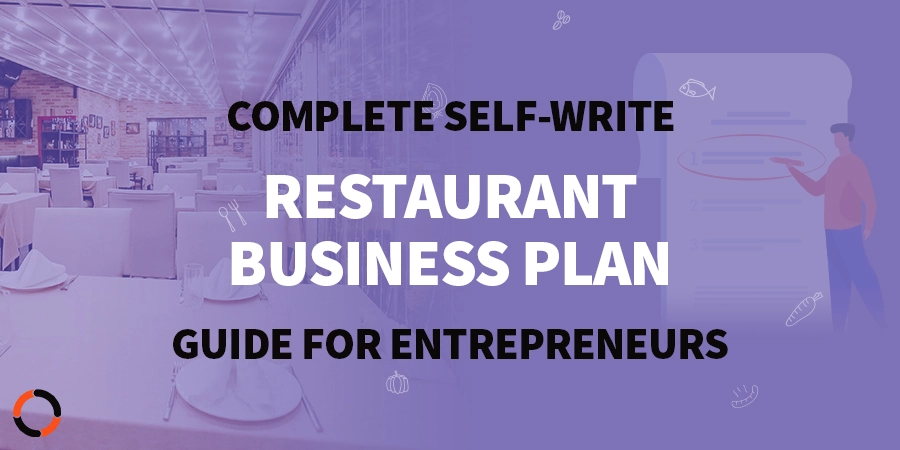Complete Self-write Restaurant Business Plan Guide for EntrepreneursPosted by Rajeshkumar on June 4th, 2024
A bankable Restaurant business plan is a crucial first step for restaurant entrepreneurs for several reasons. A bankable plan is not just a document but a strategic tool that can set the stage for a successful restaurant venture. It's an essential first step that no restaurant entrepreneur should overlook. The Purpose of Plans, Attracting Investors: A well-crafted Restaurant business plan is often the first thing investors want to see. It provides a comprehensive overview of your restaurant concept, target market, and financial projections. This document serves as a roadmap, outlining how the business will become profitable. By presenting a solid bankable plan, entrepreneurs can demonstrate they've done their homework and convince investors that their restaurant is a worthy investment. Regulatory Approvals: Operating a restaurant requires various licenses and permits from local health departments, liquor boards, and other regulatory bodies. A detailed restaurant business plan helps demonstrate to these regulators that you understand the industry and have considered all necessary regulations in your planning. Feasibility Assessment: An external independent agency often conducts a feasibility study to determine the viability of a restaurant in a specific location. The plan provides the necessary information for this assessment, helping to identify potential challenges and opportunities in the market. Avoiding Failure and Bankruptcy: The restaurant industry is notoriously competitive, with a high failure rate. A thorough plan includes a SWOT analysis (Strengths, Weaknesses, Opportunities, Threats) that helps entrepreneurs anticipate problems and devise strategies to mitigate risks, thereby increasing the chances of success and avoiding potential bankruptcy. Attracting Talent: A compelling restaurant business plan can also help attract talented chefs, managers, and staff. It shows that the restaurant has a clear direction and vision, making it an attractive place to work. Financial Feasibility: Lastly, a plan is essential for assessing the financial feasibility of the restaurant. It includes detailed financial projections, providing a clear picture of the expected revenue, costs, and profitability. This information is crucial for both the entrepreneur and potential investors to understand the financial implications of the venture. Essential Parts of a Restaurant Business Plan1. Executive SummaryThe executive summary is the first section of your restaurant business plan. It provides a high-level overview of your restaurant concept, target market, and financial projections. This section should be concise, compelling, and designed to entice the reader to learn more about your restaurant. Your executive summary should include your restaurant’s name, location, and the type of cuisine you plan to serve. It should also outline your unique selling proposition—what sets your restaurant apart from the competition. Additionally, you should provide a brief overview of your financial projections, including your expected revenue, costs, and profitability. Remember, the executive summary is often the first impression potential investors get of your restaurant, so make it count! 2. Menu and ServicesYour menu is the heart of your restaurant, so it deserves a section of its own in your business plan. This section should provide a detailed description of your menu items, including the ingredients, preparation methods, and pricing. You should also discuss any additional services your restaurant will offer, such as catering or delivery. If you plan to serve alcohol, include information about your liquor license and your plans for a bar area. There are many value-added services you can add. Here are a few to consider: Digital Presence: In today’s digital age, having a strong online presence is crucial. A user-friendly online food ordering website, multi restaurant delivery software, and active social media profiles can significantly boost a restaurant’s reach. Additionally, partnering with popular food delivery platforms can ensure the restaurant’s offerings are accessible to customers who prefer dining at home. Loyalty Programs: A well-structured loyalty program can be a game-changer for a restaurant business. It encourages repeat visits and fosters a sense of belonging among customers. By offering rewards such as discounts, free meals, or priority reservations, restaurants can build a loyal customer base. This not only increases revenue but also turns customers into brand ambassadors who spread positive word-of-mouth. Catering Services: Expanding into catering services can open up new revenue streams. Whether it’s corporate events, weddings, or parties, there’s always a demand for quality food. Offering a range of customizable menus and packages can cater to diverse customer needs. It also provides an opportunity to showcase the restaurant’s culinary skills to a broader audience, thereby increasing brand visibility. 3. Company DescriptionThe company description provides detailed information about your restaurant. This section should include your restaurant’s legal structure (e.g., sole proprietorship, partnership, corporation), ownership information, and a detailed description of your restaurant's concept. You should also describe the ambiance of your restaurant, the seating capacity, and the type of service your customers can expect (e.g., full service, fast-casual, takeout). Additionally, you should discuss any plans for future growth, such as opening additional locations or expanding your menu. 4. Market AnalysisThe market analysis section of your restaurant business plan involves a detailed examination of your target customers, the local restaurant market, and your competition. This section should demonstrate that there is a viable market for your restaurant and that you have a clear understanding of your competition. Your market analysis should include demographic information about your target customers, such as age, income level, and dining preferences. You should also provide information about the size and growth trends of your local restaurant market. 5. Organization and ManagementThis section of your restaurant business plan should outline your restaurant’s organizational structure and provide information about the ownership and management team. You should include an organizational chart showing the roles and responsibilities of each member of your team. You should also provide detailed bios of your management team, highlighting their experience in the restaurant industry. If you plan to hire additional staff, include job descriptions and hiring criteria for each role. 6. Marketing and Sales StrategyThis section of your restaurant business plan should outline your strategies for attracting and retaining customers. You should discuss your branding and advertising strategies, as well as your plans for promotions and customer loyalty programs. Your marketing strategy should also include a detailed plan for your restaurant’s grand opening. This could involve a soft opening for friends and family, a grand opening event for the public, and special promotions for your first few weeks of operation. 7. Funding RequestIf you’re seeking funding for your restaurant, this section of your plan should outline your current funding requirements, future funding requirements over the next five years, how you will use the funds, and the types of funding you would consider. You should provide a detailed breakdown of how you plan to use the funds, whether it’s for purchasing equipment, renovating your restaurant space, or covering operating expenses until you reach profitability. 8. Financial ProjectionsThe financial projections section of your restaurant business plan should provide a forecast of your restaurant’s financial performance over the next three to five years. This section should include projected income statements, cash flow statements, and balance sheets. Your financial projections should be realistic but optimistic. They should demonstrate that your restaurant will be profitable and provide a good return on investment for any potential investors. Importance of Technology in Restaurant Business PlanDiscuss the following points: 1. An online food ordering system can be a game-changer in the restaurant industry, making businesses more modern and profitable. It revolutionizes the way restaurants operate, bringing numerous benefits. 2. Managing a fleet of delivery vehicles for timely delivery, enhancing customer satisfaction. Briefly discuss GPS tracking and route optimization to ensure efficient deliveries, reduce fuel costs, and improve service speed. 3. Efficient utilization of manpower and delivery staff is another topic. Discuss Online systems that automate many tasks, freeing up staff to focus on providing excellent customer service. Consider how it can allow better scheduling, ensuring peak times and smooth deliveries. Importance of Outsourcing for Efficiency and QualitySoftware Providers: Restaurants require various software solutions for smooth operations, such as Point of Sale (POS) systems, inventory management systems, customer relationship management (CRM) software, and more. These systems help streamline operations, improve efficiency, and provide valuable insights for decision-making. However, developing these systems in-house requires significant time, resources, and technical expertise. By outsourcing to experienced software providers, restaurants can get customized solutions that fit their unique needs. These providers also offer training and support, ensuring the restaurant staff can effectively use the software. Delivery System: In the digital age, an online food delivery system is a must for any restaurant. It allows customers to place orders from the comfort of their homes, thereby increasing the restaurant's reach and revenue. However, developing and maintaining such a system can be complex and time-consuming. Therefore, it makes sense to outsource this to a specialized service provider. They have the expertise to develop a user-friendly and efficient system that meets the restaurant's specific needs. They also provide ongoing support and updates to ensure the system remains up-to-date and secure. This allows the restaurant to focus on what they do best - preparing delicious food. Food and Beverage Sourcing: The quality of food and beverages served is crucial to a restaurant's success. Therefore, it's important to source high-quality ingredients. However, finding reliable suppliers can be challenging and time-consuming. By outsourcing food and beverage sourcing to a specialized service provider, restaurants can ensure they get the best ingredients at competitive prices. These providers have established relationships with a wide network of suppliers and can negotiate better deals. They also handle logistics and quality control, ensuring the ingredients are delivered fresh and on time. This post originally appeared on kopatech.com Like it? Share it!More by this author |



